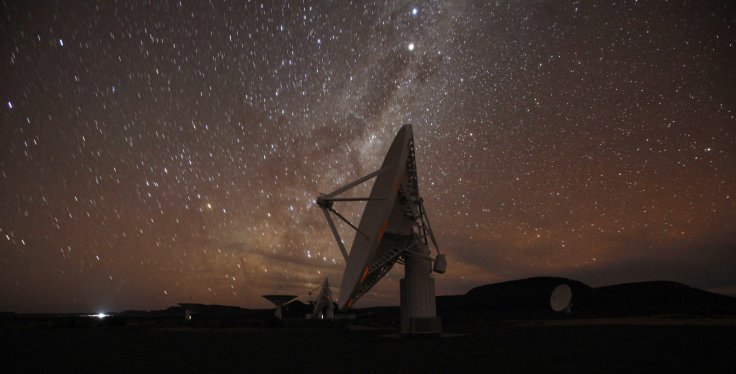Capturing radio signals emanating from space still makes scientists scout for an answer for the possible source. Ever since the fast radio bursts (FRBs) are noticed, space enthusiasts are experiencing an adrenalin rush.
Recently scientists detected a new signal from a nearby galaxy, which looks surprisingly like our own. Astronomers believe that further such findings would help the scientists to solve the mystery around these intense blasts of energy that are being sent through the universe.
Unknown signals from space
When it comes to alien signals from space, it always has captured humanity's attention for over a decade. Earlier, eight unknown signals were recorded by the Canadian Hydrogen Intensity Mapping Experiment (CHIME) radio telescope.
Last year, in January one such signal, FRB 121102, appeared repeatedly and in the same month, scientists noted the second repetition of the signal FRB 180814. Now again, almost at the same time of the year, scientists detected a new signal, named FRB 180916 this January.
It should be known that the radio signals are transmitted serially and the longest pause between them accounted for over 20 hours. However, the scientists claimed that not all FRBs come from extreme gravity environments and this finding showed that there could be several different classes of objects or events that had to create FRBs.
Hunting for the source of radio signals

If it was a sci-fi movie or a series like "Lost in Space" then you could have a chance to assume that such signal was sent by a spaceship crew, who went to settle down a colony somewhere else in the universe but got lost for several reasons and then trying to make a contact with earth or other team members.
But, it is neither a movie plot, nor a book, as scientists are still trying to hunt for the source of the FRBs for more than a decade. Over the years what they have detected is a bunch of unknown signals without a known source. Such kind of research is difficult as these signals last for just milliseconds and could have been generated from anywhere in the space.
What scientists have found
The astronomers have so far managed to detect the precise sources of four of the bursts but now they have managed to locate another one from the nearby galaxy. The scientists were excited to find out about the galaxy which is similar to our own.
Sarah Burke-Spolaor, assistant professor of physics and astronomy and co-author on a new paper in Nature that the identification of the host for this space signal "is critical to tell us about what kind of environments FRBs live in, and thus what might actually be producing FRBs," and this is a question for which astronomers are "still grasping at straws."

Where is this mystery taking us?
The mystery related to the question of where FRBs are coming from is creating more puzzles around the science world. Scientists revealed that the first of the signal came from a small galaxy which is created with metals and newly formed stars. But it will not help the scientists in terms of the newly found galaxy and this means that astronomers will have to consider other explanations of how FRBs are generated.
The newly found signal was originated only half-a-billion light-years from earth. Scientists also noted that it is much nearer than other bursts that have been found in the past and seven times closer than the other bursts. Astronomers believe that further study of the burst that could give further clues about the origin of such signals









